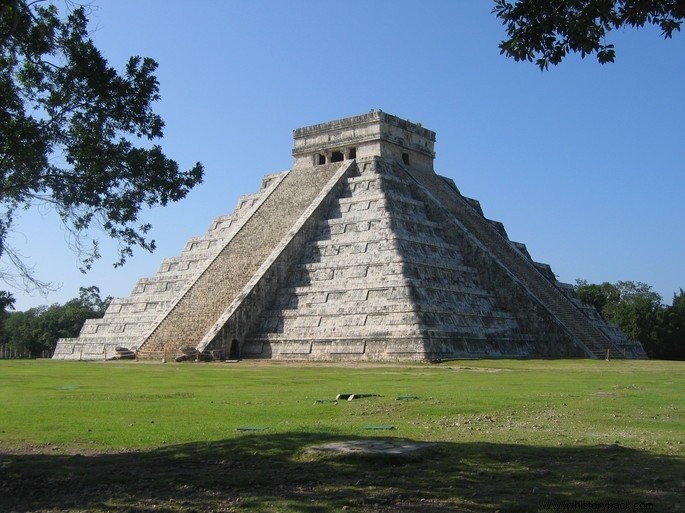Pre-Columbian peoples are those who lived in America before the arrival of Christopher Columbus.
This term is used to refer to the native peoples of Hispanic America and Anglo-Saxon America. For Brazil, the term pre-cabraline is used.
Among the pre-Columbian cultures we can find Incas, Aztecs, Mayans, Aymaras, Tikunas, Nazcas and many others.
Pre-Columbian Civilizations
The most studied pre-Columbian civilizations are the Incas, Aztecs and Mayans.
These three peoples were sedentary and lived in cities where there were temples, palaces, markets and houses. Although they are very different from each other, we can highlight some common characteristics of pre-Columbian societies.
Pre-Columbian societies were extremely hierarchical with the emperor at the top of the hierarchy, followed by priests, military chiefs, warriors, and peasants who farmed the land.
Agriculture was the basis of their economy and they planted corn, potatoes and pumpkins, among others. They practiced handicrafts, especially ceramics, but they also made metal pieces.
Likewise, they gave importance to clothing, in which there was a very clear distinction between the clothes of the nobles and those of the common people.
Finally, another characteristic of pre-Columbian societies is polytheism. Various gods linked to the cycle of life were worshiped in ceremonies that included processions and sacrifices of humans and animals.
Mayans
The Mayans settled in what is now southern Mexico, Guatemala, Belize, and Honduras. They grew cotton, corn, tobacco and developed a sophisticated number system.
However, what strikes us the most about the Mayans is their impressive architecture. Pyramids still survive today where human and animal sacrifices were offered. These buildings were richly decorated with animal statues and various symbols.
As they were excellent astronomers, they created calendars where they could know the dates of eclipses and seasons. All this was essential for carrying out agricultural activities and rituals to their gods.

See also :Mayans
Aztecs
The Aztecs originally lived in northern Mexico.
They immigrated to the center of this territory and subjected various peoples and, in 1325, they settled in the middle of the Mexican plateau where they built their capital, Tenochtitlan, in the center of a lake. This city became the center of the great empire and impressed the Spaniards with its wide and clean streets.
The Aztec people organized themselves as a true empire and collected tribute from the subjugated peoples. They grew peanuts, corn, tomatoes, cocoa (to make chocolate), beans, pumpkins, peppers, melons, avocados and traded handicrafts with neighboring populations.
The Aztecs also took advantage of wars to capture brave warriors and thus offer them to the gods in religious rituals.
See also :Aztecs
Incas
They lived in the region where present-day Peru, Ecuador, part of Chile and Argentina are located.
The Incas subjected various peoples and established a network of taxes and labor contributions that reached throughout the empire. They recorded the collection of taxes and events in a system called quipo. This consisted of a series of colored threads where knots from 1 to 9 were made.
They planted corn, bata and coca, and domesticated animals such as the llana from which they obtained wool, milk, meat, in addition to helping with the load of goods.
Like other pre-Columbian peoples, the Incas were polytheistic and honored nature. For this they performed grandiose ceremonies at each change of season that included processions, music, animal and human sacrifices.
See also :Incas
Economy of the pre-Columbian peoples
The basis of the economy of pre-Columbian peoples was agriculture. For this, in the case of the Incas, they developed a sophisticated system of irrigation and cultivation by “storeys”. The Aztecs, in turn, learned to land and make planting sites in the middle of the lake, in places that received the name of "chinampas".
Both the Incas and the Aztecs also levied taxes on the peoples they had conquered. Likewise, families should send their sons (or daughters) to serve the emperor.
In return, peasants were entitled to land according to the size of their family. In times of famine or pestilence, they could use the grain reserves provided by the emperor. Therefore, these societies have not known hunger or misery.
We have more texts on the subject for you :
- Mayan art
- Inca art
- Aztec art
- Inca culture
- Incas, Mayans and Aztecs
